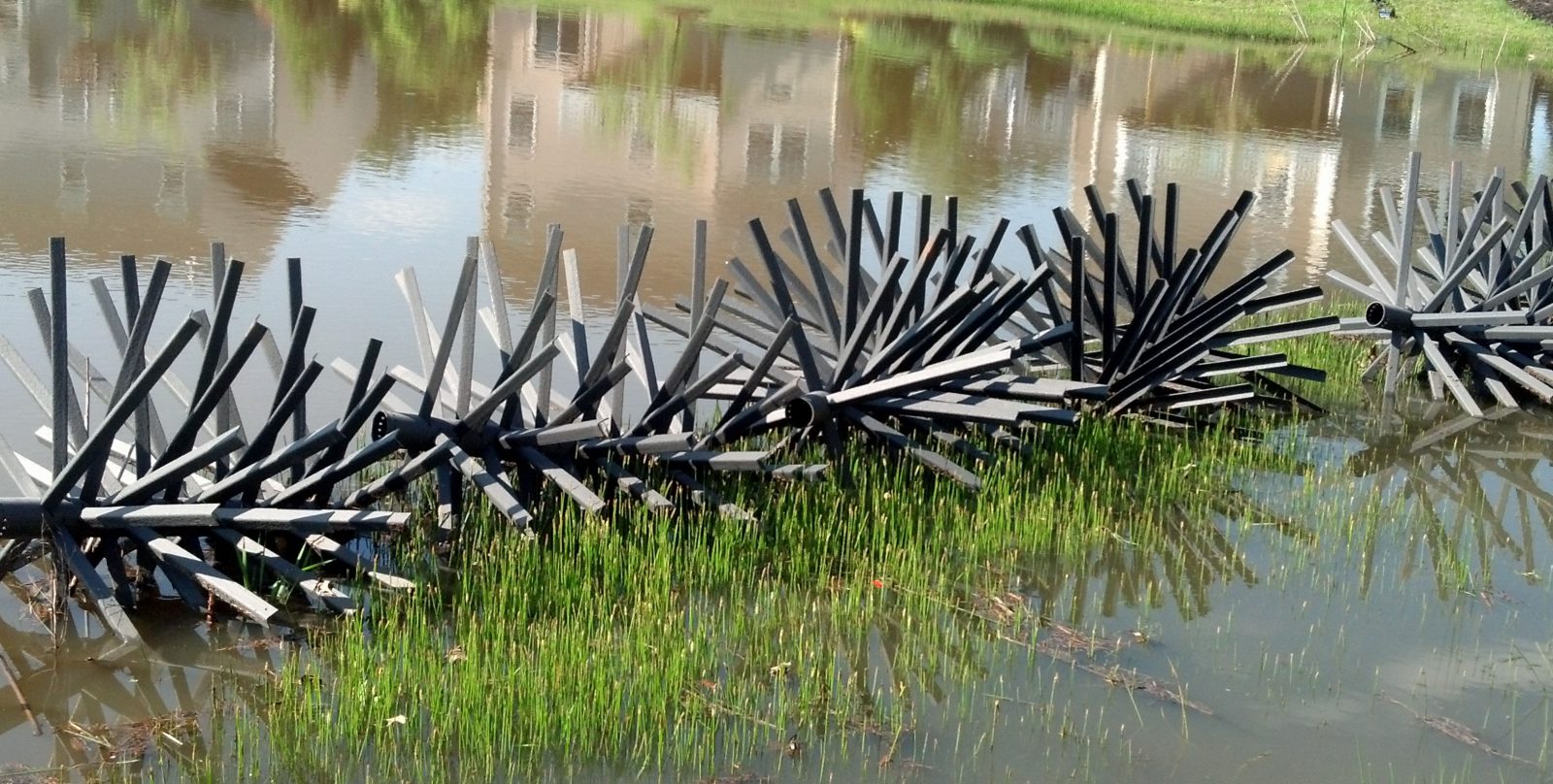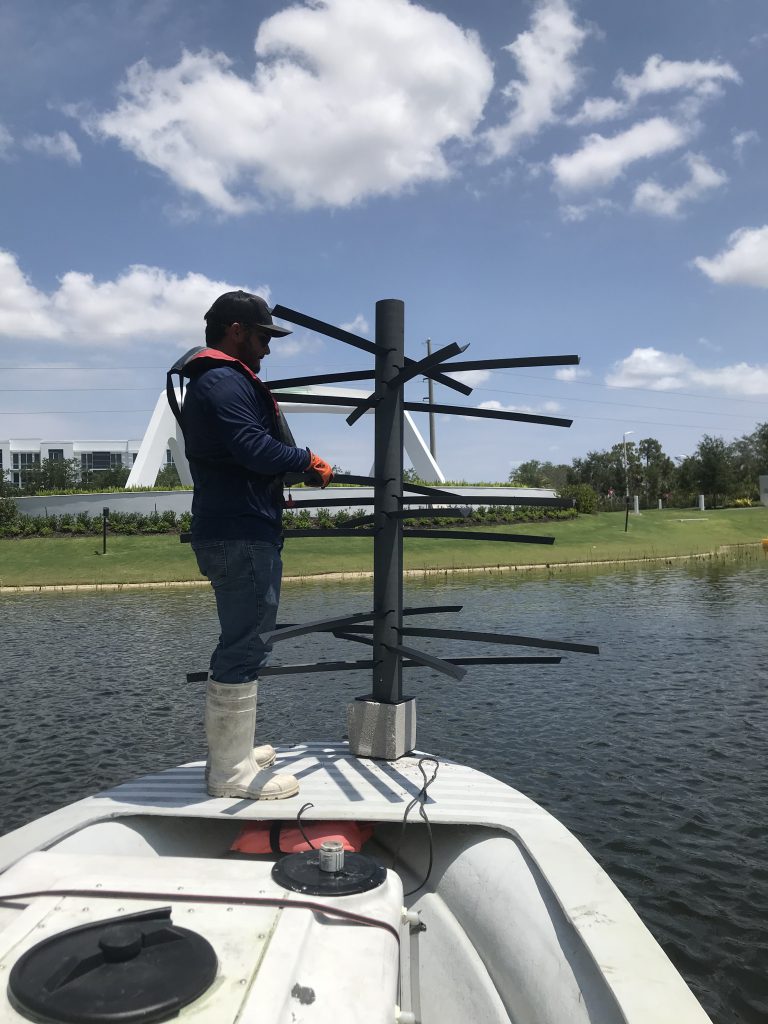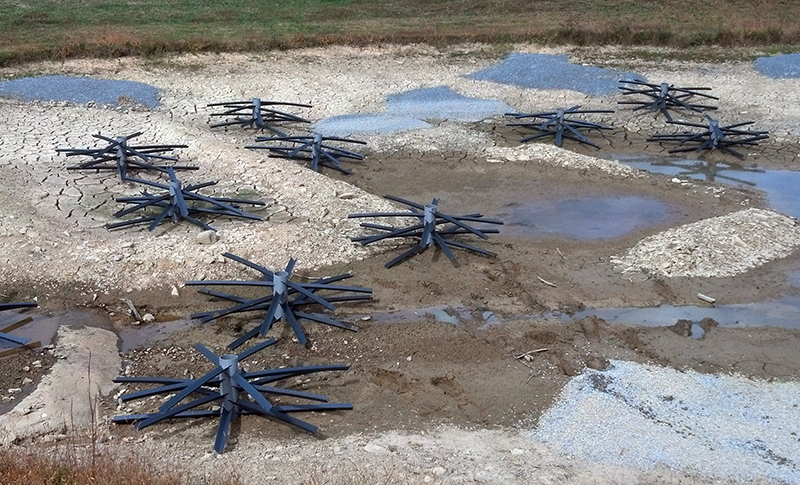
Fish Habitat Management: “Cover” Your Waterbody
There’s an old adage that states, “Ninety percent of fish live in ten percent of the water.” This statement has more truth than most realize. Fish move throughout their environment for a variety of reasons including spawning, optimizing their temperature, feeding, and avoiding predators. For “lie in wait” predators and many baitfish species, these movements are mostly relegated to being in or around the desired cover at varying depths. The availability of quality fish cover and the fishes’ desired depths will determine which 10% of the aquatic environment the fish choose to live in at any point in time. Therefore, placement of the right amount of cover at the appropriate depths should be a major objective of a lake or pond owner’s habitat improvement projects.

How to Create a Better Aquatic Habitat for Your Fish
For the purposes of this article, I’ll limit discussion to the non-living cover that can be placed in a waterbody to provide cover for your fish. The first consideration in choosing cover type is the physical make-up of this cover with respect to its suitability for both forage fish and predator species. Baitfish tend to prefer large dense cover that offers the tight interstitial spaces and volume needed to protect them from predators. Larger predator species, however, prefer less dense cover with larger interstitial spaces that provide them a place to “loaf” while they await prey to make “their last mistake.”
Cover also provides substrate for periphyton. Periphyton is a general term used to describe the community of bacteria and invertebrates that live on most underwater surfaces. Periphyton are not only important as a food source for your fish but also play an important role in improving water quality and competing with undesirable pond algae for nutrients. While all forms of cover will provide a substrate for periphyton, the quantity of periphyton is directly proportional to the surface area of the structure on which it grows.

Since periphyton grow best on firm materials you should choose materials that will be long lasting. Artificial structures constructed for this purpose are made of high density plastic material, which, when placed underwater away from damaging UV rays, can last several decades. Scrap construction materials can also be used as cover. Preferred scrap includes used concrete, cinder block piles, and old or damaged culverts. Natural varieties of structure that work well in ponds include large rock, certain varieties of cut trees such as cedar or juniper, and many varieties of hardwood trees. Trees with soft wood such as willow and pine decompose quickly, relative to hardwood varieties, and are not recommended for use as fish cover. Ease of handling and the equipment available for placement should also be considered when choosing your cover material.
Unlike humans, fish utilize their environment to optimize their body temperature. Water temperature changes far more vertically in the water column than it does horizontally. For that reason, fish move vertically in the water column to maintain their temperature at their desired level. Therefore, cover should exist in all depths of the lake or pond. Dense cover should be located closer to shore where smaller fish and baitfish hang out while less dense cover should be placed in deeper water. Incorporating diversity into the type and placement of your structure will offer your fish suitable habitat for all seasons.
Finally, don’t overdo structure. Ten percent coverage of your waterbody is plenty to support most cover-reliant species. And when it’s time to go fishing, you’ll know which ten percent of the pond your fish are spending their time in!
Enhance Your Fishery with SOLitude
SOLitude Lake Management is committed to providing full service lake and pond management solutions that improve water quality, preserve natural resources, and reduce our environmental footprint. Our services include lake, pond and fisheries management programs, algae and aquatic weed control, mechanical harvesting, hydro-raking, installation and maintenance of fountains and aeration systems, water quality testing and restoration, bathymetry, lake vegetation studies, biological assessments, habitat assessments, invasive species management and nuisance wildlife management. Services, consulting and aquatic products are available to clients nationwide, including homeowners associations, multi-family and apartment communities, golf courses, commercial developments, ranches, private landowners, reservoirs, recreational and public lakes, municipalities, parks, and state and federal agencies. Learn more about SOLitude Lake Management and purchase products at www.solitudelakemanagement.com.









